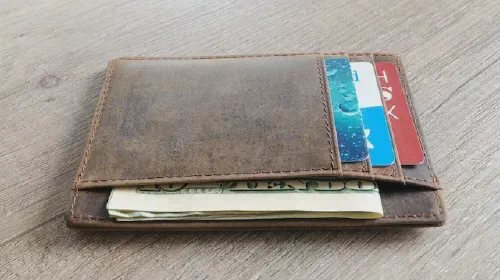Staying Safe in the Digital Payment Age
Salomon Kisters
Jun 12, 2023This post may contain affiliate links. If you use these links to buy something we may earn a commission. Thanks!
In today’s technologically advanced world, paying for goods and services has never been easier or more convenient. With just a few clicks, we can transfer funds, buy products and complete financial transactions online.
But the digital payment age has also brought with it a new set of risks and challenges, from identity theft and fraud to hacking and cyber-attacks. It’s important, now more than ever, to stay vigilant and educated about the ways we can protect ourselves from these threats.
In this blog post, we’ll explore some of the key strategies and tools that can help you stay safe in the digital payment age.
Understanding the Risks of Digital Payments
Digital payments have become increasingly popular over the years, with many people opting to make purchases online or through mobile apps. While digital payments provide convenience and ease, they also come with risks. One of the most significant risks is the potential for fraud and unauthorized transactions, which can lead to financial loss.
Hackers can gain access to personal information, such as credit card details or bank account information, and use it to make unauthorized transactions. Phishing scams and malware attacks can also be used to steal personal information, making it crucial to be cautious when sharing sensitive data online.
Moreover, digital payment systems can also be vulnerable to technical glitches and system failures, leading to issues such as transaction failures, delays, or double charges. Such glitches and system failures can be frustrating, particularly if you need to make a payment or receive funds urgently.
Understanding the risks of digital payments is vital, especially if you frequently engage in online financial transactions. By being aware of the potential risks and taking steps to protect your personal information, you can safeguard yourself from financial loss and other potential issues.
Protecting Your Personal Information in a Digital Transaction
Digital payments have made transactions easier and faster, but it has also made personal information vulnerable to theft or fraud. Here are some ways to protect your personal information when making digital payments:
1. Use a secure network
When making digital transactions, avoid using public Wi-Fi networks as they are not secure and your information can be easily accessed by others. Instead, use a secure network, preferably a virtual private network (VPN) to encrypt your data.
2. Beware of phishing scams
Scammers often send fake emails or text messages posing as legitimate companies to lure you into revealing your personal information. Always verify the authenticity of the email or text message before providing any information.
3. Keep your software updated
Make sure that your device’s operating system, web browsers, and other software are updated to their latest versions. This is because they often contain security patches to prevent cyberattacks.
4. Use strong passwords
Create strong, unique passwords consisting of a combination of uppercase and lowercase letters, numbers, and symbols for different accounts to prevent unauthorized access.
5. Enable two-factor authentication
Two-factor authentication adds an extra layer of security to your accounts, making it harder for cybercriminals to access them even if they have your password.
By following these steps, you can protect your personal information and stay safe while making digital payments.
Choosing the Right Payment Method for Your Safety
When it comes to making digital payments, there are various options to choose from such as credit and debit cards, mobile payments, e-wallets and even cryptocurrencies. However, not all payment methods are created equal and some may carry more risks than others.
To ensure your safety, it is important to choose payment methods that are secure and have trusted providers. Credit and debit cards with EMV chips, for example, offer more security than traditional magnetic stripe cards. Mobile payments such as Apple Pay and Google Wallet also offer additional security layers like biometric authentication and tokenized transactions.
E-wallets like Paypal and Venmo have gained popularity in recent years for their ease of use and convenience. However, it is important to ensure that the e-wallet provider has strong security measures in place such as two-factor authentication and encryption.
Cryptocurrencies such as Bitcoin have also emerged as an alternative payment method with built-in security features like encryption and decentralization. However, the volatility of cryptocurrencies and the lack of regulation may make them a risky choice for some.
It is important to do your research and choose a payment method that is secure, trusted, and fits your individual needs. By selecting the right payment method, you can ensure your financial information remains safe and secure in the digital payment age.
Recognizing Scams and Fraud in Digital Payments
As digital payment methods become increasingly popular, so do the risks associated with them. One of the biggest concerns is the potential for scams and fraud. Criminals are constantly finding new ways to trick users into sharing their personal information or transferring money to fraudulent accounts. It’s important to be able to recognize these scams to protect yourself and your finances.
One common scam is phishing, where scammers send emails or text messages that appear to be from a legitimate company, such as a bank or payment processor. These messages often ask for personal information or direct you to a fake website where you’re asked to input sensitive data. Always verify the sender’s email address or website URL before sharing any information.
Another scam to watch out for is fake invoices or payment requests. Scammers will send an invoice or payment request that looks authentic but contains fraudulent information. Always double-check the details of any requests you receive, especially if they come from an unfamiliar source.
Lastly, be wary of unsolicited requests for payment or donations. Scammers often use emotional appeals or urgent messages to pressure users into sending money. Always take the time to research the organization or person requesting the payment or donation before proceeding.
By staying vigilant and being aware of these common scams, you can protect yourself from digital payment fraud and enjoy the convenience of digital payments with peace of mind.
Best Practices for Secure Digital Payments
As digital payments become more common, it’s important to ensure that your transactions are secure. Here are some best practices to follow for secure digital payments:
Use reputable payment vendors
Stick to well-known payment vendors that have a track record of securely handling transactions. Avoid using unfamiliar payment vendors that may not have the same level of security protocols in place.
Don’t share your personal information
Be cautious about sharing your personal information online. When making a purchase, only provide the necessary information, such as your name, address, and payment details. Avoid providing unnecessary personal details, such as your social security number or birthdate.
Use strong passwords
Use complex passwords for all of your online accounts, including your payment platforms. Avoid using easily guessed passwords like “password” or “123456”. Consider using a password manager to generate and store complex passwords.
Keep your software up to date
Ensure that your computer or mobile device’s software is up to date with the latest security patches. This can help prevent hackers from accessing your device and stealing sensitive information.
Check your statements regularly
Routinely check your payment statements to ensure that you recognize all transactions. If you notice any unauthorized charges, contact your payment vendor immediately to report the fraudulent activity.
By following these best practices, you can help ensure that your digital payments are safe and secure.
Stay informed with the latest insights in Crypto, Blockchain, and Cyber-Security! Subscribe to our newsletter now to receive exclusive updates, expert analyses, and current developments directly to your inbox. Don't miss the opportunity to expand your knowledge and stay up-to-date.
Love what you're reading? Subscribe for top stories in Crypto, Blockchain, and Cyber-Security. Stay informed with exclusive updates.
Please note that the Content may have been generated with the Help of AI. The editorial content of OriginStamp AG does not constitute a recommendation for investment or purchase advice. In principle, an investment can also lead to a total loss. Therefore, please seek advice before making an investment decision.

Betting on NBA with Crypto: Complete Guide to Basketball Crypto Betting
Learn how to bet on NBA basketball using Bitcoin, Ethereum, and other cryptocurrencies. Explore various betting options and top crypto betting sites for NBA.

Benefits of Anonymous Cryptocurrency Wallets | Privacy, Security, and Autonomy
Discover the benefits of using anonymous cryptocurrency wallets for enhanced privacy, security, and autonomy in your financial transactions.

Anatomy of Digital Payments: Types, Parties, and Security Measures Explained
Learn about the anatomy of digital payments, including types, parties involved, and security measures to protect your financial information.
Protect your documents
Your gateway to unforgeable data. Imprint the authenticity of your information with our blockchain timestamp